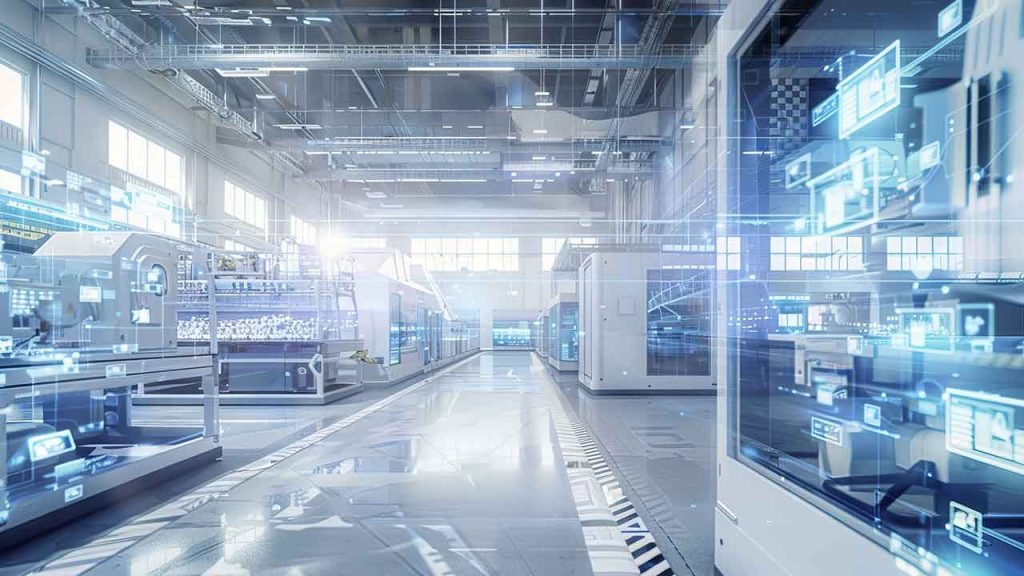Innovating at the Edge: Erik Nordmark on IoT, Security, and the Future of Industrial Technology
Navigating the complexities of legacy systems, security threats, and scalability remains a significant challenge in the fast-evolving world of industrial technology. Erik Nordmark, co-founder of an edge computing company, has spent decades at the forefront of these issues. From his early days working with sensor networks and internet protocols to his current role building scalable, secure edge solutions, Nordmark has gained a unique perspective on how industrial organizations can successfully modernize without disrupting existing operations.
I had the opportunity to meet Erik at the 2025 ARC Industry Forum to discuss his journey, the evolution of edge computing, and the key challenges facing the Industrial IoT (IIoT) landscape. His insights shed light on how businesses can adapt to technological changes while maintaining security and operational integrity.
From Sensor Networks to Edge Computing
Erik’s path to founding his company began with early exposure to sensor networks — battery-powered devices deployed in remote areas to collect environmental data. This work introduced him to the challenge of networking these systems using emerging protocols. His involvement with the Internet Engineering Task Force (IETF) during the early days of TCP/IP protocols gave him a deep understanding of the foundational technologies that would later enable the rise of IoT.
“I got exposed to what people later started calling IoT,” Erik recalls. “It was all about networking little sensors in the field and figuring out how to handle security and connectivity challenges.”
His experience at Sun Microsystems further shaped his thinking. While working on Solaris, he encountered the complexities of building secure, scalable operating systems. He realized that industrial experts working in oil and gas or manufacturing — often lacked the technical expertise to select the right technology stack for their needs.
“You can’t expect someone who’s an expert in analyzing oil wells to also know how to configure a hypervisor or reconfigure firewalls,” Erik notes. “That’s where we saw an opportunity — to build something that manages this complexity from the hardware up, enabling data processing at the edge.”
Building a Business Around Edge Computing
The idea for his company emerged from informal discussions over pizza with colleagues who recognized the growing need for edge computing. The goal was to create a solution that could process large amounts of data at the edge, reducing reliance on cloud-based processing and enabling faster, more autonomous decision-making.
“We realized that running a software-as-a-service (SaaS) model, at scale, would be key,” Erik explains. “But the challenge was ensuring security, robustness, and the ability to handle potentially millions of devices in unpredictable environments.”
To address this, the company open-sourced its edge computing software through the Linux Foundation, contributing to the LF Edge Foundation. This move allowed them to focus on building a business around scalable software while fostering an ecosystem of partners.
“We never intended to build every piece of the stack ourselves,” Erik says. “We wanted to create a platform where others could plug in their solutions — like a commercial firewall or analytics tool — and make it all work together, at scale.”
Challenges at the Edge
One of the biggest challenges Erik and his team face is working with legacy systems. Industrial organizations often have equipment that has been in place for decades, creating compatibility issues when trying to implement modern IoT solutions.
“Organizations want to modernize, but they can’t afford downtime,” Erik points out. “If you take a production line offline, that’s lost revenue. So, you have to figure out how to layer new technology on top of what’s already there — without breaking it.”
Security is another major concern. Erik highlights the complexities of securing edge devices, which often operate in environments with limited connectivity and constrained infrastructure.
“We’ve seen cases where the application team builds something for the cloud and assumes they can just install Docker or Kubernetes on a field device,” Erik says. “But what happens when you need to update the OS remotely or deal with network reconfiguration? That’s where things get tricky.”
Additionally, differences between operational teams within organizations can create friction. Erik recalls a situation in which an application team built a database that couldn’t withstand a power outage, but the infrastructure team had already decided not to install uninterruptible power supplies to save costs.
“It’s about getting everyone on the same page,” Erik says. “Application teams need to understand the hardware constraints, and infrastructure teams need to understand the software requirements.”
The Future of IoT and Security
Looking ahead, Erik sees security as the most significant challenge for IoT. He emphasizes the need for a “zero-trust” approach, where devices and applications are treated as inherently untrustworthy unless explicitly verified.
“Successful attacks often involve chaining together small vulnerabilities across different systems,” Erik explains. “You need to assume that any part of the system could be compromised and build internal barriers to limit the damage.”
Erik also warns about the risks in the hardware supply chain. Sophisticated attackers could insert malicious components at the manufacturing stage — hidden in ways that would evade even X-ray inspection.
“The only solution is defense in depth,” Erik says. “You need to build multiple layers of security so that even if one layer is compromised, the system remains secure.”
Lessons for the Industry
For industrial organizations navigating the transition to edge computing, Erik advises starting small and focusing on modularity.
“Don’t try to rebuild everything at once,” he advises. “Start by identifying high-impact areas where you can extract value quickly — like predictive maintenance or localized data processing.”
Containerization, Erik notes, can provide the flexibility needed to modernize legacy applications without disrupting operations.
“By running applications in isolated containers, you can update and evolve different parts of the system independently,” Erik explains. “That allows you to add AI capabilities or improve analytics without rewriting the entire stack.”
Erik’s passion for the work remains clear. “It’s still a lot of fun,” he says with a smile. “The technology keeps evolving, and the business challenges keep changing. That’s what makes it exciting.”
As industrial organizations grapple with the demands of modern IoT, Erik Nordmark’s insights highlight the importance of balancing innovation with operational stability — and the critical role that edge computing will play in shaping the future.
About the author
 This article was written by Greg Orloff, Industry Executive, IIoT World. Greg previously served as the CEO of Tangent Company, inventor of the Watercycle™, the only commercial residential direct potable reuse system in the country.
This article was written by Greg Orloff, Industry Executive, IIoT World. Greg previously served as the CEO of Tangent Company, inventor of the Watercycle™, the only commercial residential direct potable reuse system in the country.
